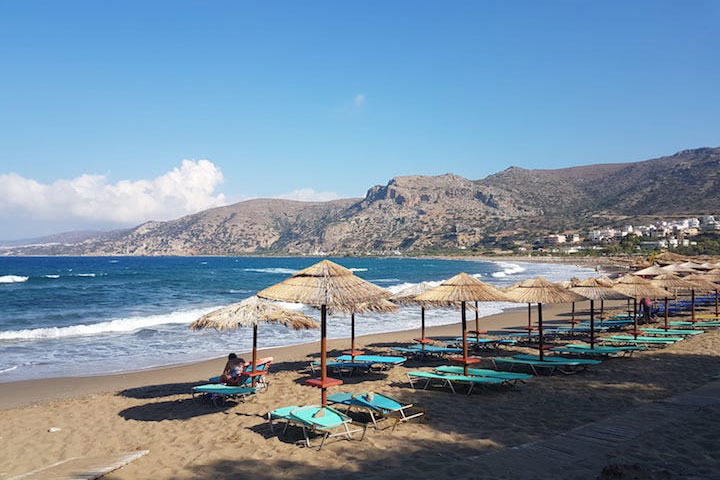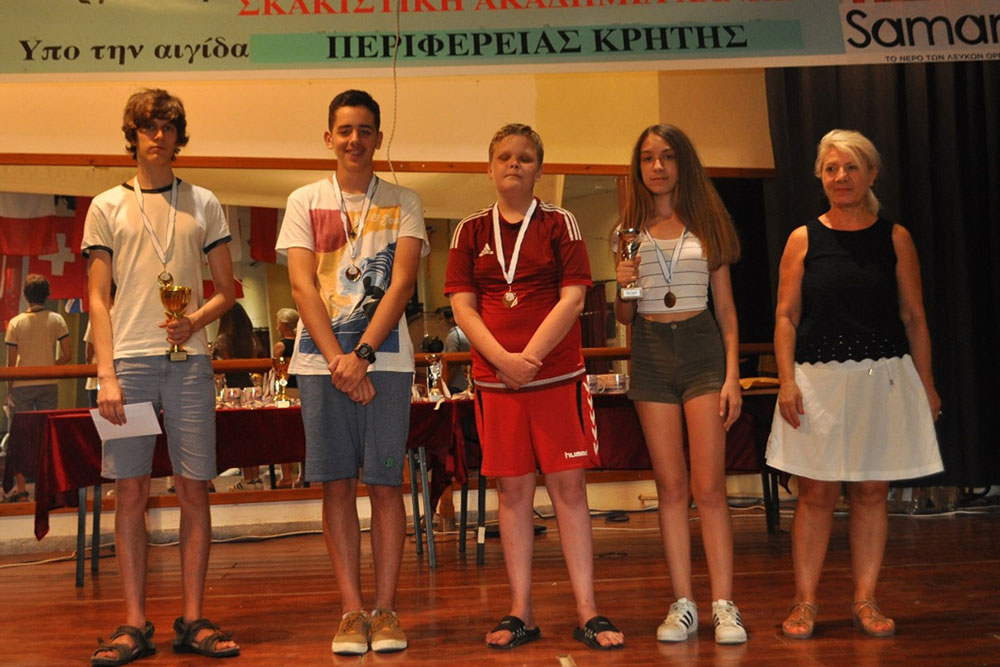Paleochora Open 2018
The nine-round open tournament in Paleochora, Crete, organized by the Chania Chess Academy, the prefecture of Crete and the municipality Kandanos-Selino, took place between July 18th and 25th and for the eleventh time. A total of approximately 200 participants were in attendance. The successful formula of this tournament consists first of all in the combination of playing a serious chess tournament together with a beach holiday. The first price of €1,800 draws the attention worldwide of many titled men and women of all nationalities. Along with the ‘regular’ prizes, there were prizes for the categories U18, U16, U14 and U12, as well for the best veteran.
Besides, Paleochora is a beautiful small peninsula with a beach on both sides accompanied by the stunning view of the high Cretan mountains. It is located near the famous Samaria gorge. On top of that, the very warm and hospitable organizers Anelia and Kostas Tsarouha receive all the (returning) players each year with care and love. The side activities contain the annual trip to one of the ten most beautiful beaches (according to Trip Advisor) Elafonissi, and the Blitz tournament on the main street of the village lasts until deep into the night.
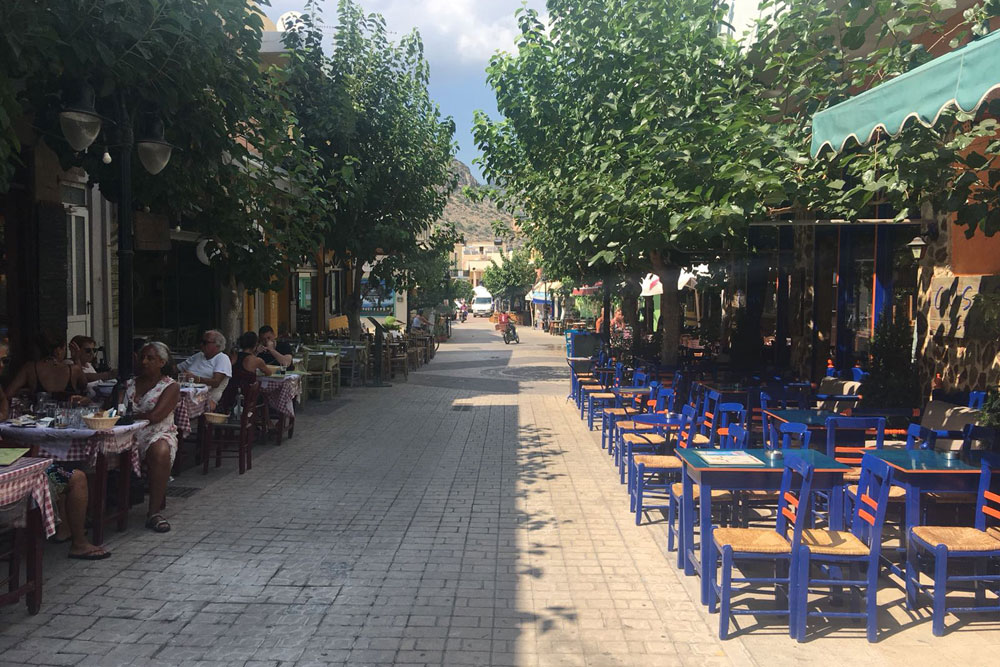
Main street Paleochora | Photo: Jan Werle
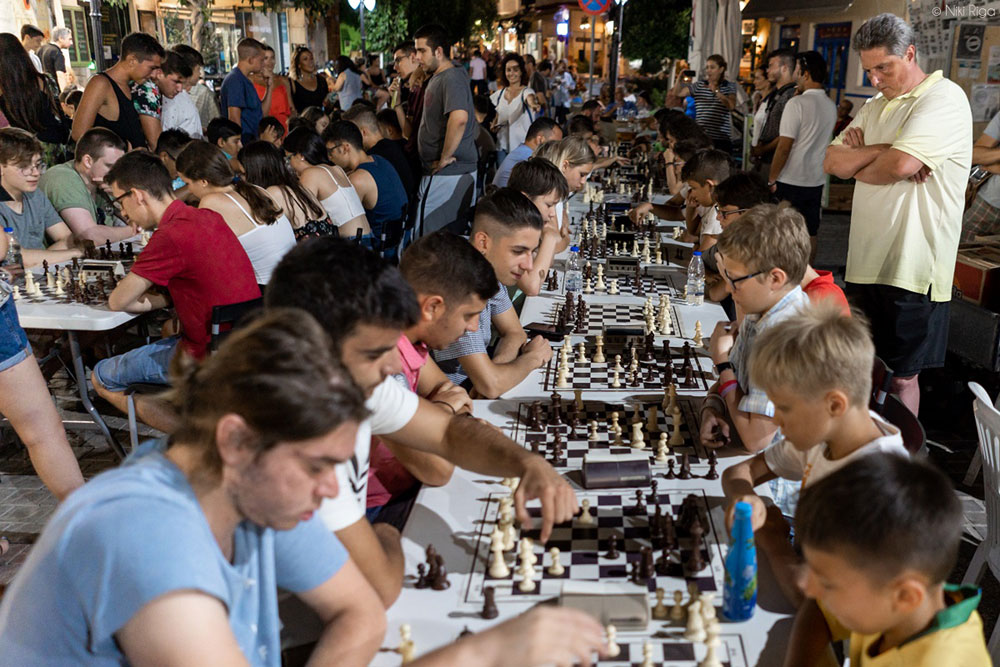
The blitz tournament | Photo: Jan Werle
For years now, organizers Anelia and Kostas held twin strong open tournaments in the romantic Venetian town Rethymno, on the north-west coast of Crete, which unfortunately ceased to exist in the year 2014 due to financial problems. Back then most participants could extend their holidays by playing both open tournaments and were transported by the organization from the north to the south-west coast of Crete to Paleochora.
Each round began daily at 17:30 and the temperature could rise as high as 35 degrees sometimes, making street life feasible in the morning and in the evening from 18:00 until midnight. For the chess players it was important not to lie too long in the sun in order to be in a good shape when the round started, so the day had to be divided into a tight schedule. As it happens, between 12:00 and 18:00 most stores were closed due to the heat — Greek siesta time. According to Mediterranean custom, the streets came back to life around 18:00 when all taverns reopened their door, the tables and chairs returned to streets, which filled with little children running about until midnight.
Romance and more
There were countless couples taking part in this tournament, and perhaps some 'prospective' couples, seduced by the warm breezes, crystal clear light blue seawater and last but not least the Greek cuisine.
Italian Grandmaster Alberto David has visited this tournament nine times already and was celebrating his honeymoon in Crete as a newlywed together with his wife Inna. At the start of the 8th round the organizers surprised him with a wedding chess cake (incidentally facing his opponent — me — who also was entranced by the idyllic atmosphere).
But Alberto and Inna and all the other lovebirds aren't the only regular visitors. The Russian Grandmasters Rychagov and Kharitonov have been among the pedestrians on the boulevards or floating among Paleochora's waves in July for already a decade.
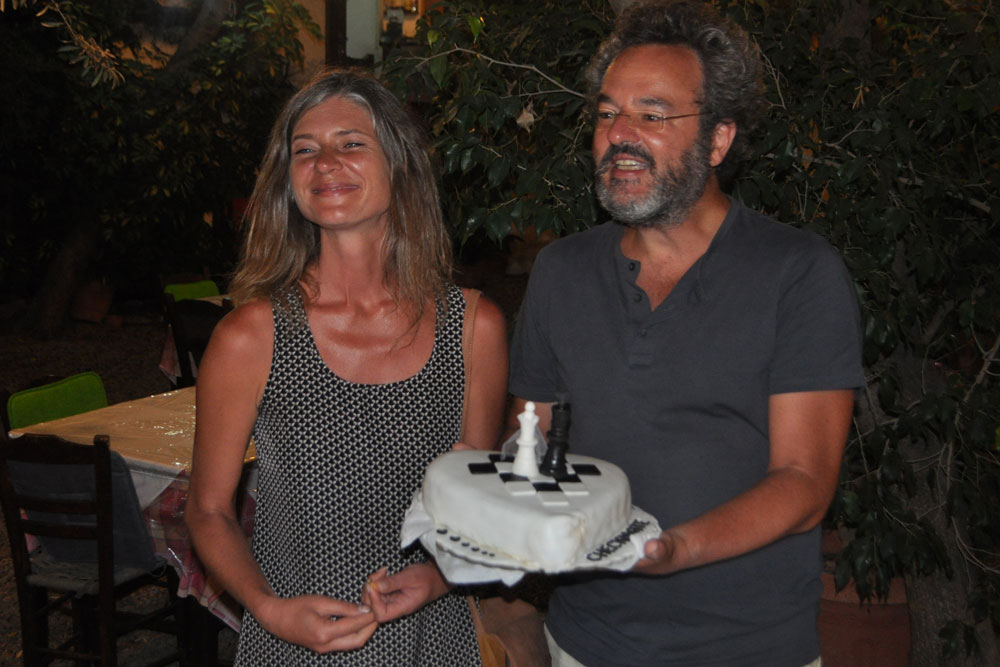
Alberto and Inna receive a surprise | Photo: Jan Werle
Standings, Games and Hercules
As mentioned there were many attempts among the participants to reach for a high score, but there was one regular visitor who ultimately reigned sovereign for the whole tournament. His name is Hristos Banikas — alias Greek God Hercules. The offspring of Zeus, allowing three draws, slaying all his other six opponents, whereas the final rankings show the next seven players stuck on 'only' seven points apiece.
Banikas 1-0 Vlachos (annotated by GM Jan Werle)
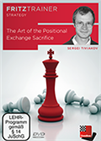 The positional exchange sacrifice is one of the most powerful and fascinating strategic weapons in chess. On this DVD Sergey Tiviakov explains why the positional exchange sacrifice is such a strong weapon and how to use it.
The positional exchange sacrifice is one of the most powerful and fascinating strategic weapons in chess. On this DVD Sergey Tiviakov explains why the positional exchange sacrifice is such a strong weapon and how to use it.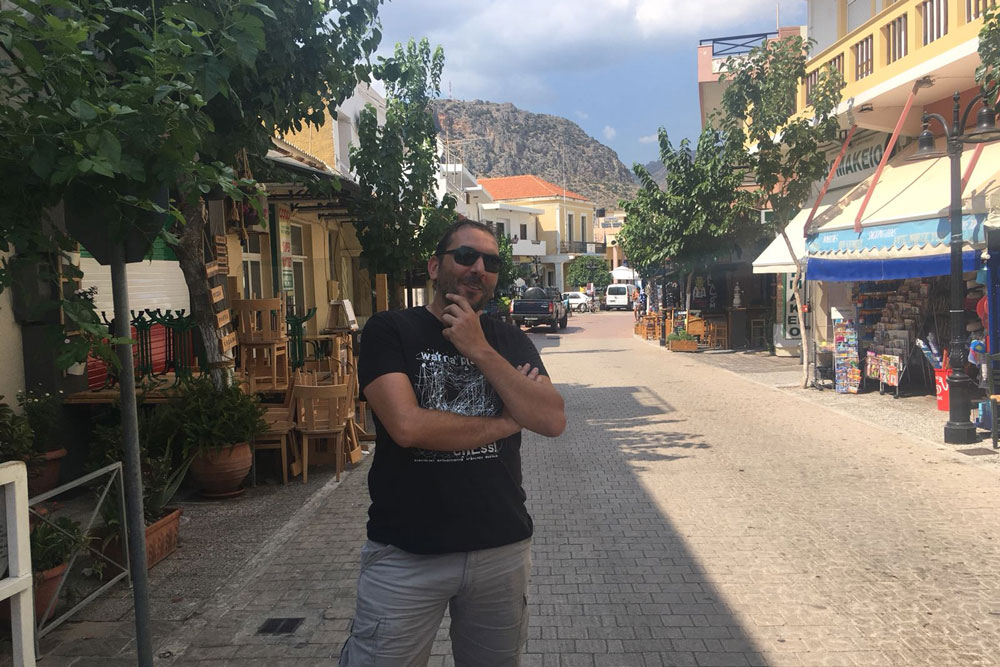
GM Hristos Banikas ruling in the main street of Paleochora | Photo: Jan Werle
Rumours abound in Paleochora that he is a half-god, half-human, as each bartender knows the legend of Hristos is in view of his appearance every year in the flesh.
Banikas provided his comments on his most interesting and important game from round 6, against Romanian GM Nevednichy. Both players were leading the field with the perfect score of 5 out of 5. The chess teacher in Banikas could surprise his opponent with a novelty from his own pupil Nikolas Theodorou.
Banikas 1-0 Nevednichy
The Catalan is one of the most solid openings for White. It forms part of the large and strong fianchetto family in which White builds his strategy mainly around the bishop on g2. Grandmaster Victor Bologan covers all of Black’s replies to the Catalan, some of which can even transpose to other openings such as the Tarrasch System and the Queen’s Indian. Suffice it to say that the Catalan rules!
Banikas’ pupil was not merely helping him with the novelty 14.Nb1, but also by beating the number one seat the Armenian GM Pashikian (2603) in a thrilling Catalan game. Theodorou is one of the Greek prodigies. He was the best player in the under-18 category in this tournament.
Theodorou 1-0 Pashikian
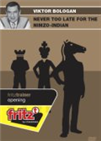 Bologan's way to the Nimzo-Indian was very long and difficult, but now the Moldavian grandmaster recommends the Nimzo-Indian to players of all levels because it’s complex and simple at the same time.
Bologan's way to the Nimzo-Indian was very long and difficult, but now the Moldavian grandmaster recommends the Nimzo-Indian to players of all levels because it’s complex and simple at the same time.Pashikian was bouncing back in round seven, breaking down the proverbial dyke erected by his Indian opponent. Neelotpal put his finger in it several times on the kingside. Finally, his position was collapsed by an Armenian flood on the queenside.
The tournament attracts players from around the globe. In the aforementioned game, we witnessed the encounter between an Armenian GM and an Indian IM. The next clash is one between an English GM and a Dutch FM. The English crusader Stephen Gordon joined the seven-pointers by defeating the Dutch representatives, Dijkhuis and myself, respectively in rounds eight and nine.
Pashikian was bouncing back in round 7 with breaking down the dyke which was built by his Indian opponent. Neelotpal put several times his finger in the dyke on the Kingside. Finally, his position collapsed by the Armenian floods on the Queenside.
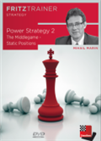 The second DVD deals with the middlegame positions where static factors play a determining part, permanently taking into account the inseparable dynamic and tactical elements.
The second DVD deals with the middlegame positions where static factors play a determining part, permanently taking into account the inseparable dynamic and tactical elements.
The playing hall | Photo: Jan Werle
Final standings (top 20)
| 1 |
2 |
|
GM |
Banikas Hristos |
GRE |
2591 |
7,5 |
55,5 |
45,0 |
| 2 |
12 |
|
GM |
Nevednichy Vladislav |
ROU |
2528 |
7,0 |
54,5 |
42,0 |
| 3 |
1 |
|
GM |
Pashikian Arman |
ARM |
2603 |
7,0 |
53,0 |
41,5 |
| 4 |
20 |
|
IM |
Barski Radoslaw |
POL |
2431 |
7,0 |
51,0 |
39,0 |
| 5 |
11 |
|
GM |
Rychagov Andrey |
RUS |
2529 |
7,0 |
50,5 |
39,0 |
| 6 |
9 |
|
GM |
Gordon Stephen J |
ENG |
2539 |
7,0 |
50,0 |
39,0 |
| 7 |
25 |
|
FM |
Kourkoulos-Arditis Stamatis |
GRE |
2416 |
7,0 |
48,5 |
38,5 |
| 8 |
21 |
|
FM |
Vlachos Anatole |
GRE |
2428 |
7,0 |
48,5 |
37,0 |
| 9 |
7 |
|
GM |
Nikolov Momchil |
BUL |
2551 |
7,0 |
47,5 |
36,5 |
| 10 |
22 |
|
GM |
Neelotpal Das |
IND |
2426 |
6,5 |
52,5 |
41,0 |
| 11 |
13 |
|
GM |
Werle Jan |
NED |
2525 |
6,5 |
52,5 |
41,0 |
| 12 |
3 |
|
GM |
Istratescu Andrei |
ROU |
2575 |
6,5 |
52,0 |
41,0 |
| 13 |
6 |
|
GM |
Hracek Zbynek |
CZE |
2563 |
6,5 |
52,0 |
40,0 |
| 14 |
19 |
|
IM |
Sandalakis Angelos |
GRE |
2448 |
6,5 |
51,5 |
40,5 |
| 15 |
10 |
|
GM |
Kelires Andreas |
GRE |
2530 |
6,5 |
51,5 |
40,0 |
| 16 |
5 |
|
GM |
Kharitonov Alexandr |
RUS |
2564 |
6,5 |
50,5 |
39,5 |
| 17 |
46 |
|
|
Cherepov Alexej |
BLR |
2175 |
6,5 |
50,0 |
40,5 |
| 18 |
8 |
|
GM |
David Alberto |
ITA |
2549 |
6,5 |
50,0 |
39,0 |
| 19 |
23 |
|
IM |
Tsolakidou Stavroula |
GRE |
2423 |
6,5 |
49,5 |
38,5 |
| 20 |
4 |
|
GM |
Fier Alexandr |
BRA |
2570 |
6,5 |
46,5 |
36,0 |
...197 Players
All available games
This DVD provides everything you need to know to be able to play one of the most classical openings with Black, the Nimzo-Indian, arising after 1.d4 Nf6 2.c4 e6 3.Nc3 Bb4. Nearly every World Championship and top tournament features the Nimzo-Indian.
Links
